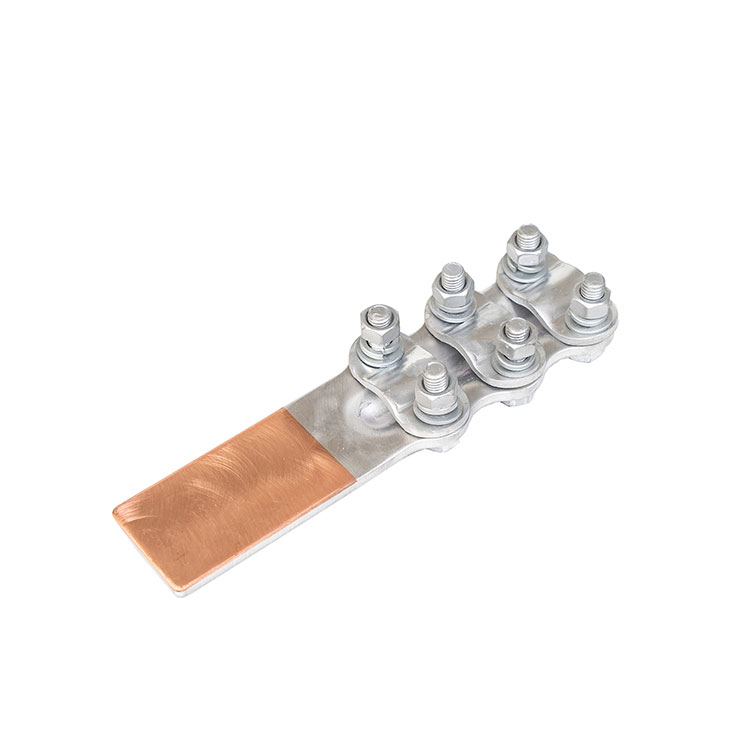As an indispensable auxiliary component in optical communication systems, the selection of fiber optic cable parallel groove clamps directly affects the stability and long-term durability of the system. Different application scenarios have varying requirements for groove clamp materials, but overall, the selection of materials should consider the following key factors to ensure optimal durability:
1. Strength and toughness
The material must have sufficient mechanical strength and toughness to withstand the weight of the optical cable, external pressure, and possible accidental impacts. For example, stainless steel or reinforced engineering plastics are often used in the manufacturing of groove clamps due to their high strength and good impact resistance, ensuring that optical cables are not damaged in a fixed state and also extending the service life of the groove clamps themselves.
2. Corrosion resistance
Fiber optic cable trench clamps are often exposed to outdoor or industrial environments, therefore corrosion resistance is crucial. Corrosion not only reduces the structural strength of the groove clamp, but may also cause indirect damage to the optical cable. The use of materials such as stainless steel, aluminum alloy, or specially treated weather resistant steel can effectively resist the erosion of rainwater, salt spray, and chemical substances, maintaining long-term stability performance.
3. Thermal stability
In environments with significant temperature changes, the thermal expansion coefficient of the slot clamp material needs to match the optical cable to avoid internal stress concentration caused by temperature differences, which can lead to damage to the optical cable or deformation of the slot clamp. Polycarbonate (PC), glass fiber reinforced plastic (FRP) and other materials are often selected as slot clamp materials due to their good thermal stability.
4. UV resistance
For outdoor applications, the slot clamp material also needs to have excellent UV resistance to prevent aging, fading, or performance degradation caused by prolonged exposure to sunlight. Adding UV stabilizers to plastic materials or metal materials with special coating treatments on the surface can effectively enhance this performance.
5. Easy to install and maintain
The selection of materials also needs to consider the convenience of installation and the need for later maintenance. Lightweight but sturdy materials such as aluminum alloy not only facilitate installation but also reduce the burden on the supporting structure, while well-designed buckle or screw fixed groove clamp structures are conducive to rapid installation and adjustment.
In summary, the material selection of parallel groove clamps for optical cables is a comprehensive consideration process that requires balancing multiple performance indicators to achieve optimal durability and economy. By carefully selecting materials, the overall stability and long-term operational efficiency of the fiber optic cable system can be significantly improved, maintenance costs can be reduced, and the continuity and security of data transmission can be ensured.





